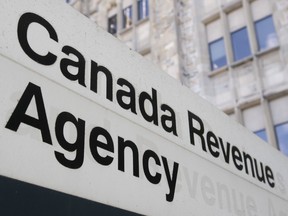Last week, the Canada Revenue Agency (CRA) unveiled the updated tax figures for 2025. Here’s a breakdown of what you should be prepared for next year.
### Inflation Adjustment Factor
Every year, the majority of income tax and benefit amounts are adjusted for inflation. The CRA noted that the inflation rate applied to the 2025 tax brackets and amounts will be 2.7 percent. This is a decrease from last year’s hefty 4.7 percent, attributed to higher inflation. Updates to tax bracket thresholds and various amounts linked to non-refundable credits will be effective from January 1, 2025. However, adjustments in specific benefits like the GST/HST credit and the Canada Child Benefit will roll out on July 1, 2025, aligning with the start of the program year for these perks.
### Tax Brackets for 2025
For the coming year, all five federal income tax brackets have been revised for inflation leveraging the 2.7 percent rate. This means the new federal brackets are: up to $57,375 (15 percent), over $57,375 to $114,750 (20.5 percent), over $114,750 to $177,882 (26 percent), over $177,882 to $253,414 (29 percent), and any earnings beyond that attract a 33 percent tax. Provinces, too, have their own tax brackets, typically indexed to inflation but based on their provincial indexation measures.
### Basic Personal Amount
The basic personal amount, which you can earn without incurring federal tax, has seen an annual hike since its declaration in 2019 until it stabilized at $15,000 in 2023. It will continue to index with inflation. For 2025, this amount climbs to $16,129, enabling individuals to earn up to this limit tax-free. If your income exceeds this, the value of the federal credit is calculated at the lowest federal personal income tax rate (15 percent) on the BPA, making it worth $2,419. As this credit is non-refundable, it maximally applies if your taxed amount meets or exceeds that value.
Higher-income individuals miss out on the full increased BPA owing to an income test. The BPA enhancement incrementally reduces above net incomes of $177,882 until it’s void at $253,414, which is the upper tax bracket threshold for 2025. Those in this bracket will default to the older BPA, which indexes to inflation, reaching $14,538 in 2025.
### Canada Pension Plan Contributions
For the year ahead, both employee and employer contributions to the Canada Pension Plan (CPP) stay at a steady 5.95 percent. However, the permissible earnings cap, known as the “year’s maximum pensionable earnings” (YMPE), hikes to $71,300, while the basic exemption retains a $3,500 threshold. Self-employed people have a contribution rate of 11.9 percent, with their maximum contribution rising to $8,068.20.
An added element is the “year’s additional maximum pensionable earnings” (YAMPE), introduced in 2024 for workers earning above the first earnings ceiling. For 2025, this second earnings ceiling will exceed the first by 14 percent, affecting pensionable earnings between $71,300 and $81,200 with a “second CPP contribution” rate of four percent for employees and employers.
### Employment Insurance Premiums
Employment insurance premiums are also set to rise. The employee rate for 2025 is pegged at 1.64 percent (1.31 percent for Quebec), with a cap at $1,077.48 ($860.67 for Quebec) based on maximum insurable earnings of $65,700.
### Tax-Free Savings Account Limit
The 2025 tax-free savings account (TFSA) ceiling will retain its $7,000 mark. The increase only occurs when the cumulative inflation adjustments since the TFSA’s inception in 2009 permit a rise to the nearest $500 increment.
### Registered Retirement Savings Plan Limit
The RRSP contribution ceiling for 2025 jumps to $32,490, growing from $31,560 in 2024. The assessable contribution cap is dictated by 18 percent of 2024’s earned income, encapsulating self-employment and rent along with leftover room from 2024, and adjusting for any pension alterations.
### Old Age Security
For Old Age Security recipients, repayments kick in with taxable incomes surpassing $93,454 in 2025.
### Prescribed Rate
The first quarter of 2025 will witness a dip in the nominal prescribed interest rate, now at four percent. This applies to taxable employee and shareholder benefits, low-interest loans, and related-party dealings. The tax refund rate stands at six percent as of January 1, 2025, which is two percentage points more than the base rate.
Remember, while borrowing from the CRA incurs an interest rate eight percent higher beginning in 2025, this reflects penalties for tax debts and missed contributions. Therefore, staying informed and engaged with these updates is paramount to managing your finances proficiently in the year ahead.
Jamie Golombek, a leading authority in Tax and Estate Planning at CIBC Private Wealth in Toronto, offers comprehensive insights into these updates. If you found this helpful, consider subscribing to the FP Investor newsletter for more stories like this one. Don’t let essential business updates slip by — bookmark financialpost.com and sign up for our newsletters today.

















